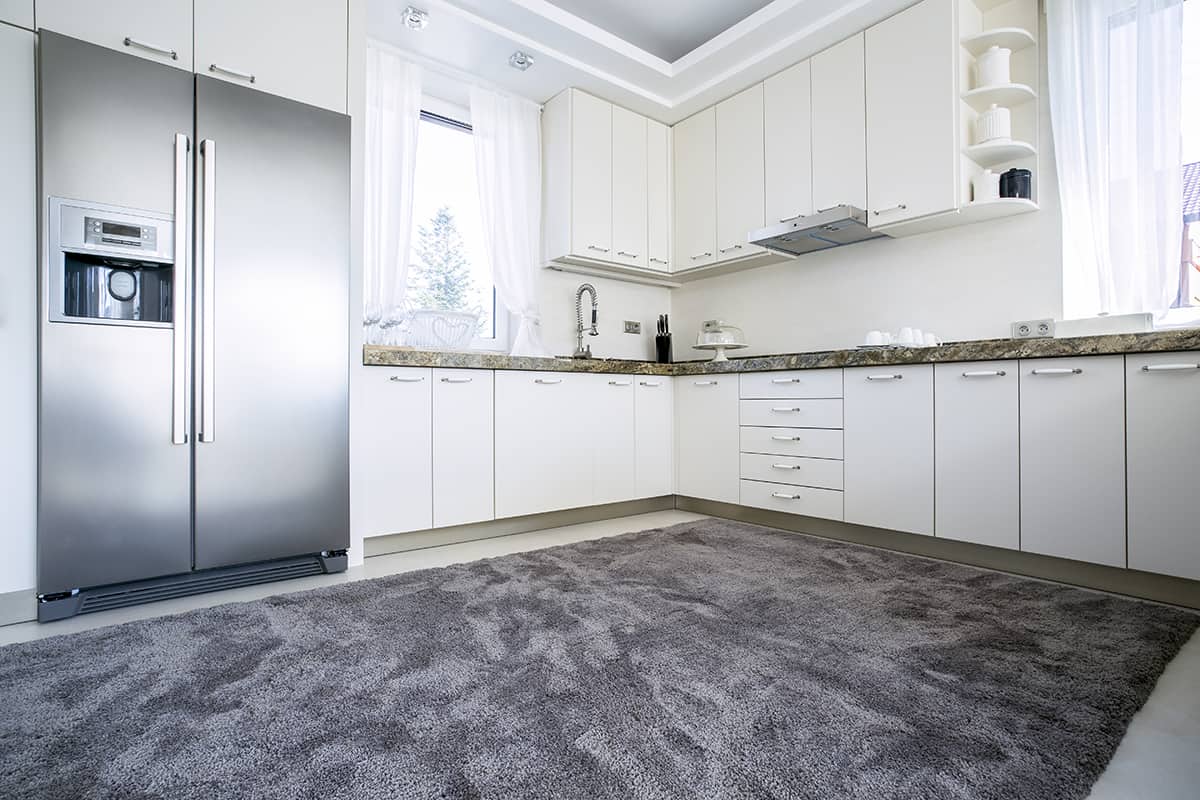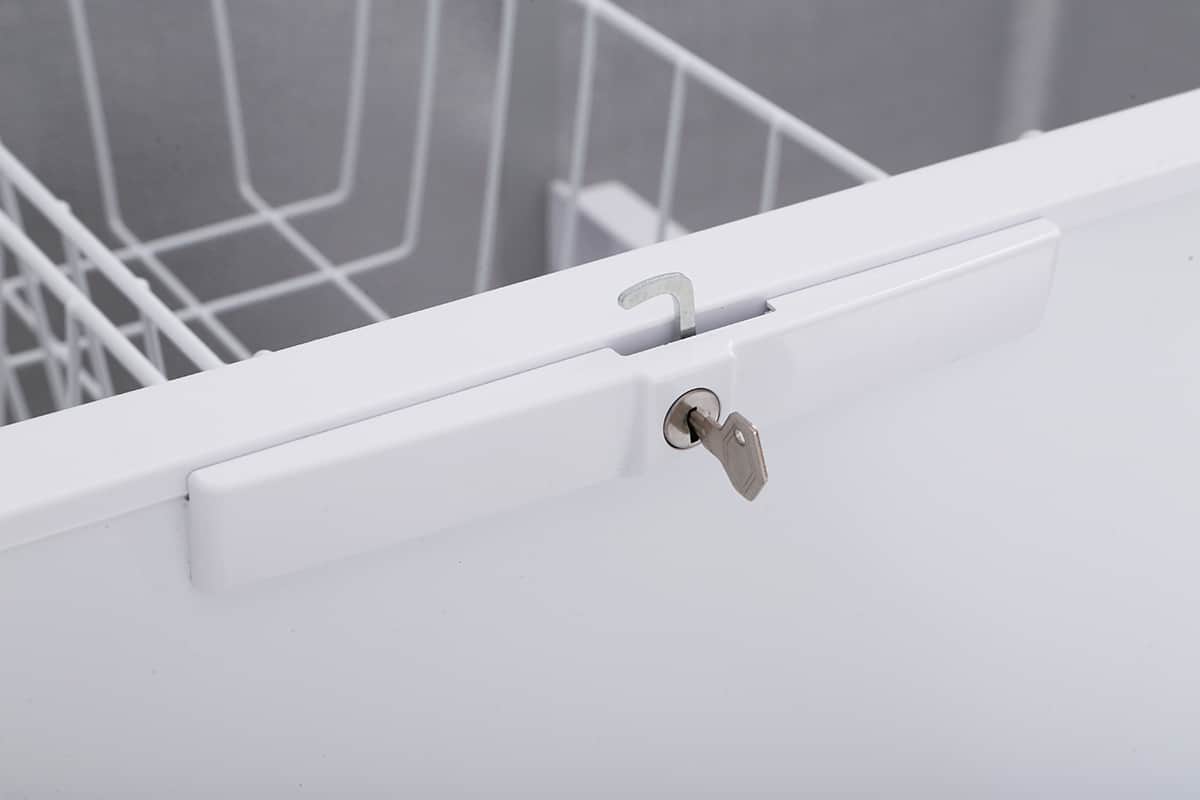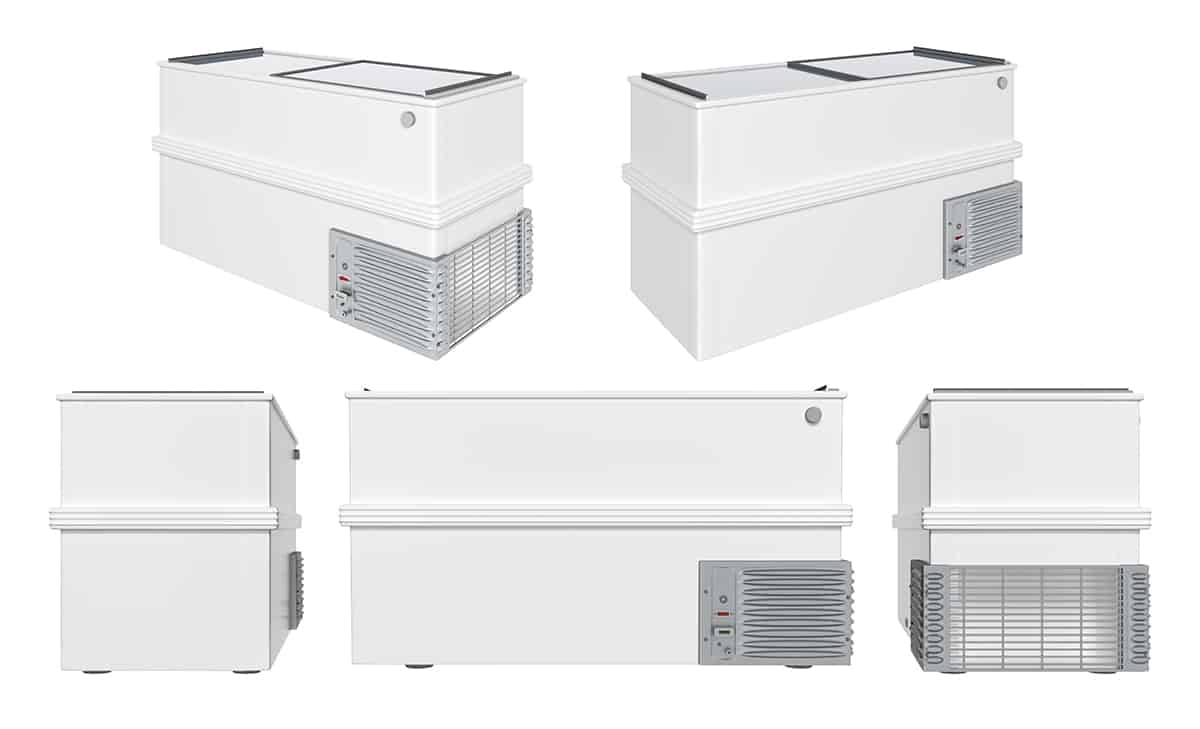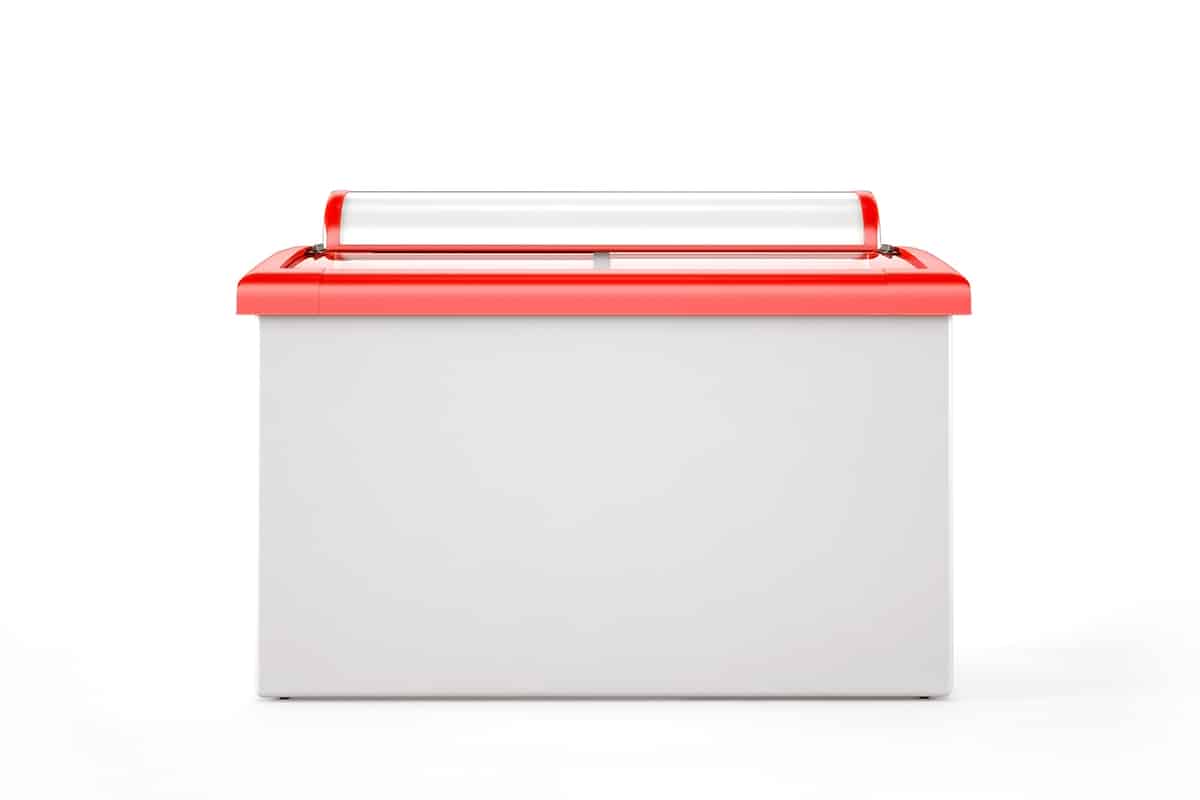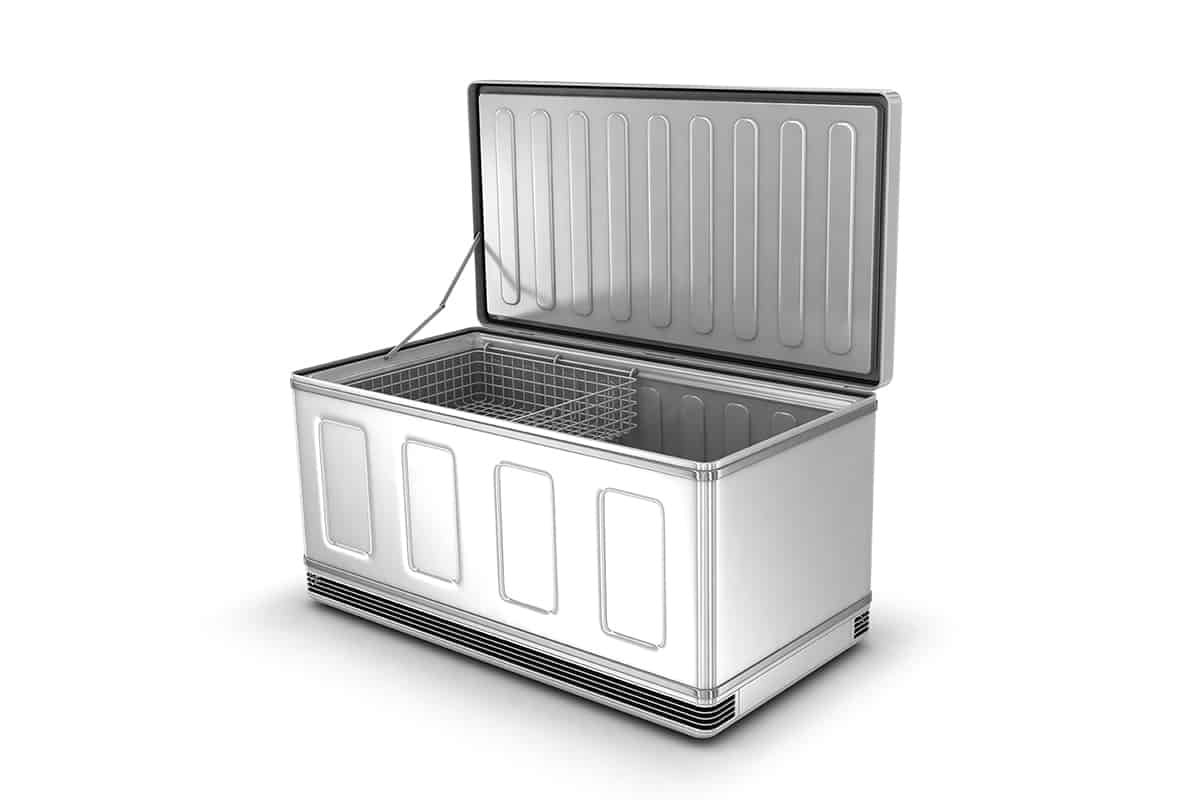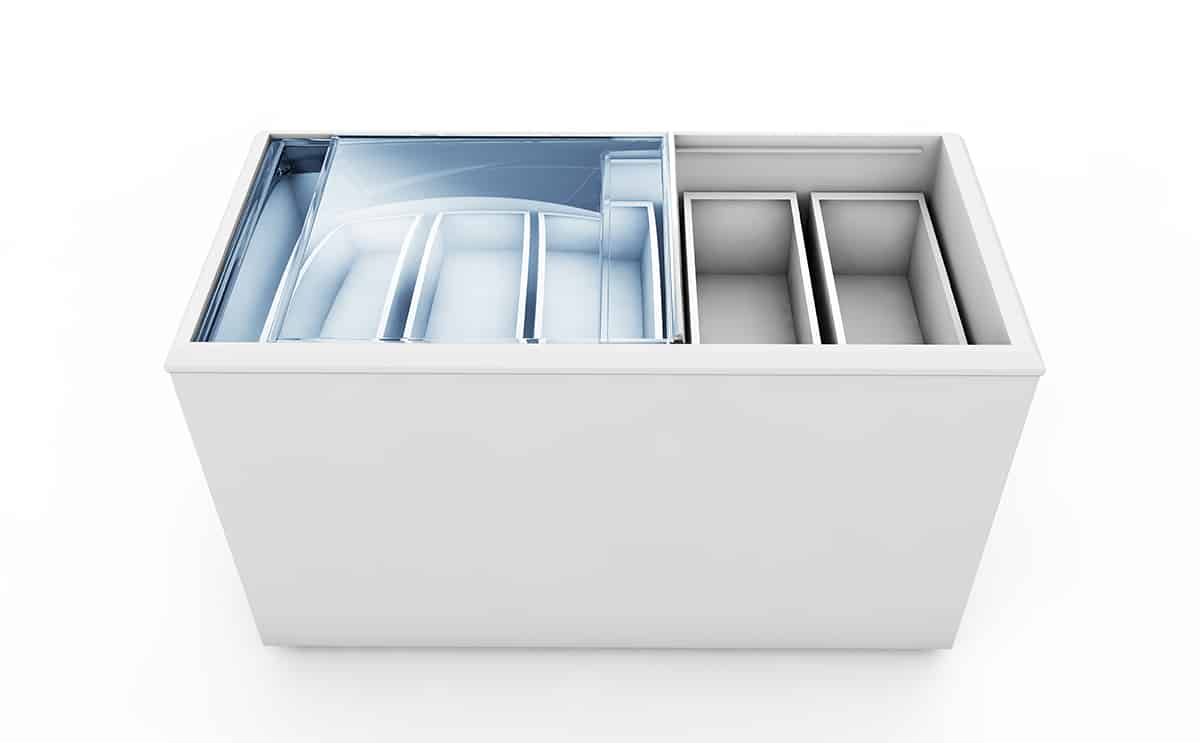Storing a freezer in your home isn’t just about finding a spot where it fits. The freezer’s location significantly affects its efficiency, lifespan, and safety. You might have wondered, “Can I place my freezer on the carpet?” An intriguing question, considering the majority of homes have carpeted floors.
Rooms which have carpets are not ideal for chest freezers because they can interfere with the required airflow.
If any leaks or condensation drip from the bottom of the chest freezer, this can be harder to spot with carpet, and it can also result in the presence of mold.
So, placing a chest freezer directly on a carpet is generally not advisable due to concerns about proper heat dissipation, potential moisture damage, and stability issues. Better alternatives include:
- On a drip mat
- On a rubber mat
- On a hard, flat surface like tiles, wood, or concrete
- On a flat raised platform
- On shims
Here we look at the best types of flooring for underneath chest freezers and how you can protect the carpet under a chest freezer.
Which Flooring is Best for Chest Freezer?
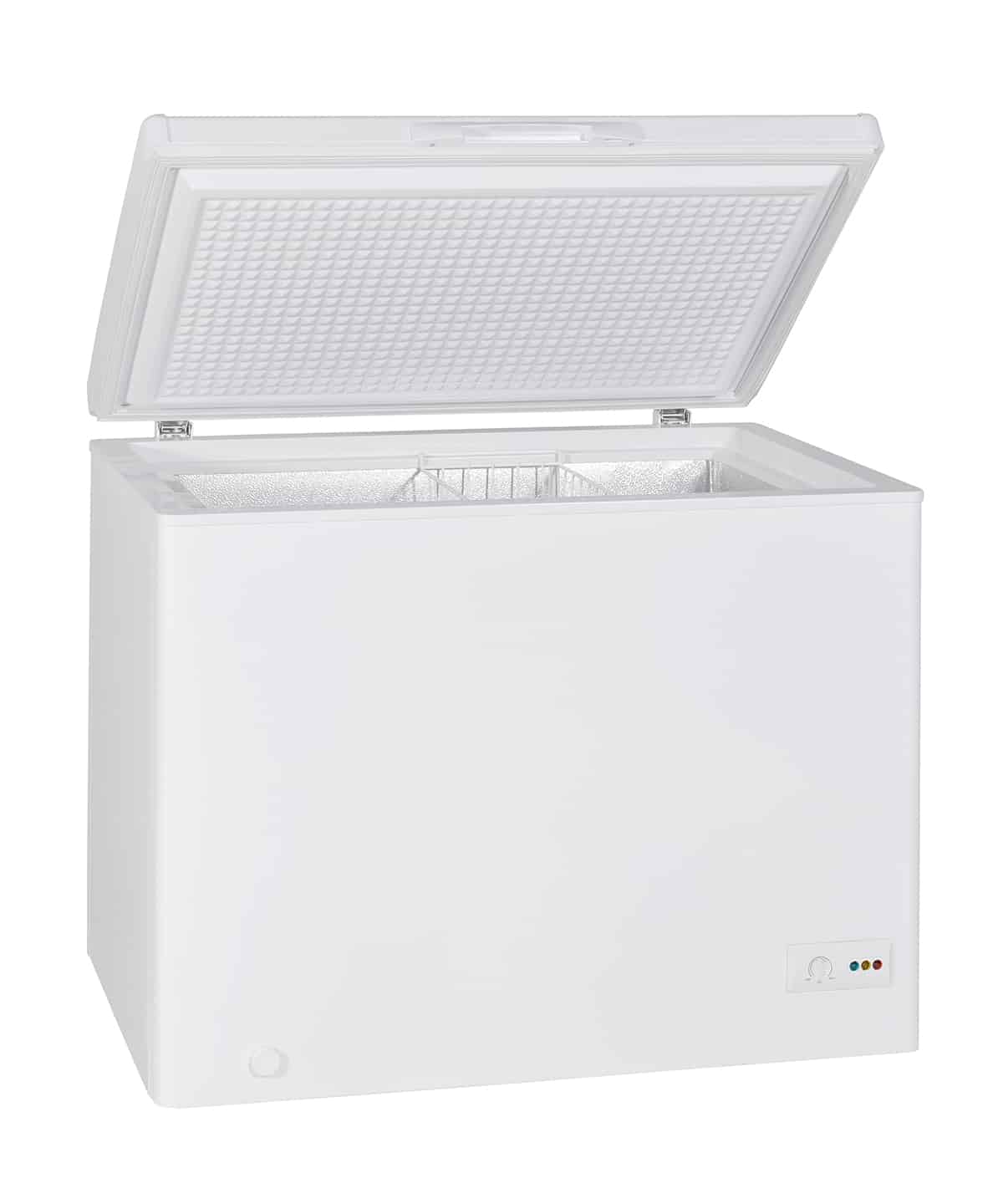
Airflow
Chest freezers are appliances that require good air circulation around them so that their cooling mechanism can function properly. For this reason, they aren’t ideal for putting on top of a carpet because the carpet tends to inhibit airflow.
Deep pile carpets in particular will limit airflow because the legs of the freezer will embed themselves deep into the carpet, and the thick pile could then be touching the bottom of the freezer to completely prevent air from flowing underneath it.
In order to ensure good airflow beneath the freezer and prevent potential issues with the appliance, a solid floor is best. This includes vinyl flooring, tiles, wood, and laminate.
Waterproof
If your chest freezer encounters a problem, one of the ways you might be alerted to this is by spotting puddles on the floor. If you have carpet beneath the freezer, then any puddles are going to be very difficult to spot because the carpet will absorb the water.
Dark carpet, in particular, will be very good at camouflaging any leaks. As well as inhibiting your ability to detect issues with the freezer, the carpet is also going to produce further issues in the event of a leak or dripping water from the freezer.
Since carpet is absorbent, it will hold onto the water and create an environment where mold and mildew will thrive. If the moisture goes undetected for a while, a mold problem arising is highly likely.
For these reasons, a waterproof flooring surface that can be wiped clean and kept dry is much preferable for underneath a chest freezer. Most types of flooring you would use in a kitchen or utility are waterproof, including laminate, tile, and vinyl.
Heat conduction
Although the job of a chest freezer is to keep food cold, the appliance itself can get very hot. The underside of the freezer, where the coils and compressor are fitted, is likely to be the warmest part of the appliance, and this heat can scorch the carpet over time, especially if the freezer is in constant contact with the carpet.
To avoid this issue, a solid floor that will not come into contact with the bottom of the freezer is most suitable.
Can Carpet Go Under the Chest Freezer?
The carpet can go underneath a chest freezer if absolutely necessary, but it is by no means the best option. In order to protect your carpet and prolong the lifespan of the chest freezer, it should be fitted on a floor surface that is solid, flat, and waterproof.
The Impact of Carpet Placement on Freezers
When it comes to placing your freezer, not all surfaces are equal. Carpets, although a common flooring choice, can pose specific challenges for appliances like freezers.
- Heat dissipation: The carpet can trap heat around the freezer, disrupting the cooling process. Consequently, the freezer may need to run longer or work harder to maintain low temperatures, leading to increased energy consumption and possibly shortening the lifespan of the appliance.
- Moisture management: Carpets can trap and hold moisture, a concern when placing a freezer. The heat from the freezer can cause this moisture to evaporate, possibly leading to condensation on the appliance. This can exacerbate issues like rusting, mold growth and even cause electrical problems in more severe cases.
- Stability: Uneven or plush carpets can create stability issues for freezers. An unstable freezer can affect door sealing, leading to cold air leakage. This means the freezer will have to work harder to keep the temperature down, reducing efficiency and potentially compromising the freezer’s lifespan.
The carpet does not tick any of these boxes. However, there are going to be some instances where the only available space for a freezer is in a room that is carpeted. You can make this scenario safer in the following ways.
Alternative Solutions for Freezer Placement
Use drip tray
A drip tray is a large metal tray with low, lipped edges. This should be big enough to cover the floor beneath the chest freezer, or you could use a few drip trays lined up in a row if you can’t find one big enough. A drip tray will catch any leaks or condensation moisture, protecting the carpet and preventing the opportunity for mold to grow.
Use rubber mat
It’s a good idea to use a rubber mat such as the Sempoda Multifunctional Home Appliance Mat underneath any freezer, even if you are placing it on a solid floor. This is because the rubber mat will protect the flooring from any potential scratches that the freezer feet could cause. It will also catch any drips so that wood or laminate flooring won’t warp from being subjected to moisture for prolonged periods of time.
Finding a Hard, Flat Surface
The best location for a freezer is on a hard, flat surface like tiled or concrete floors. Such surfaces are usually even, providing stability for your freezer, and don’t have the insulating properties of carpet that can interfere with heat dispersion.
Creating a Raised Platform
Another practical solution is to create a raised platform (Chance on YouTube) for your freezer. This can be particularly helpful if you want to place the appliance in a carpeted area. A platform can provide a level, hard surface for the freezer, promoting stability and proper heat dissipation. Be sure the platform is sturdy enough to handle the weight of the freezer.
Adjusting Freezer Feet or Using Shims
Most freezers come with adjustable feet for stability. If the carpet’s unevenness is a concern, try adjusting these feet until the freezer is level. If the feet are non-adjustable or insufficient to level the freezer, you can use shims. These thin pieces of material can be slid under the feet or edges to level out the appliance and prevent wobbling or instability.
Tips for Placing Freezer on a Carpet
If, despite these warnings, you decide to place your freezer on a carpet, here’s what you should do:
- Regularly Check and Clean the Area: Even with protective measures, it’s good practice to regularly check the area around your freezer. Look for any signs of moisture or mold growth, and address any issues promptly. Regular vacuuming around and under the freezer can help keep the area clean and prevent dust buildup, which could interfere with the freezer’s ventilation.
- Rotate the Freezer Occasionally: The weight of the freezer could cause indentations in your carpet. To prevent this, you could occasionally rotate the freezer if the design and available space allow for it. This can help distribute the weight more evenly and prevent permanent damage to your carpet.
- Consider Professional Cleaning: Depending on the type and color of your carpet, any leaks or condensation from the freezer might cause noticeable stains. You might want to consider professional carpet cleaning services every few years to maintain the appearance of your carpet and ensure any potential mold or mildew is effectively dealt with.
Where to Put a Chest Freezer
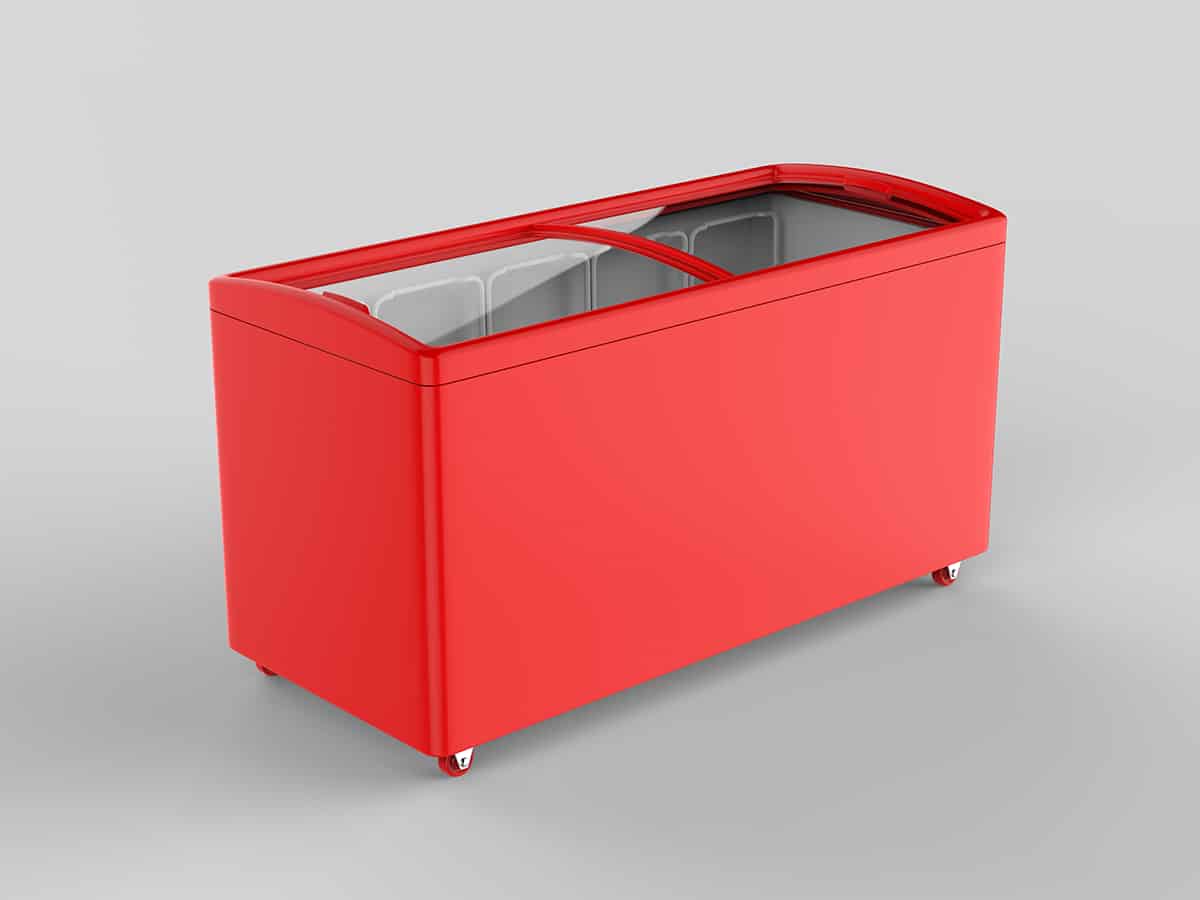
Chest freezers are so big that you might not be spoilt for choice on locations where you can fit them. However, it’s worth considering these issues before you select your spot where the chest freezer is going to be permanently positioned.
Controlled climate
The best place for a chest freezer is in a room with a controlled climate, such as a kitchen. If you store the freezer in a place that experiences extreme temperatures, it will be more likely to suffer a malfunction.
Most freezers are designed to be kept within the range of average room temperatures, so you should stay within this if you can, although there are exceptions to this rule. You can place the chest freezer outside; however, there is a caution to do that as extreme outdoor temperatures can harm the freezer without protection.
Space
Chest freezers need adequate space around them to ensure good airflow. The freezer should be positioned with its back at least 4 inches away from the wall and on a solid floor.
Shade
Avoid positioning a freezer in the path of direct sunlight since this will make the appliance warmer, so it has to work harder to achieve the same result. This will increase your energy bills and could also shorten the lifespan of the freezer.
